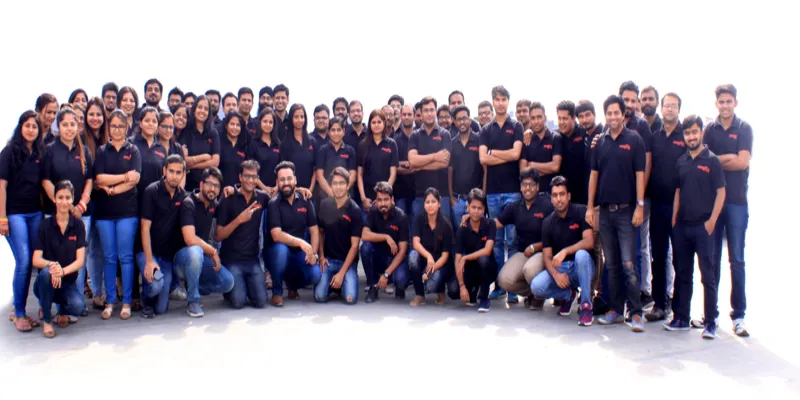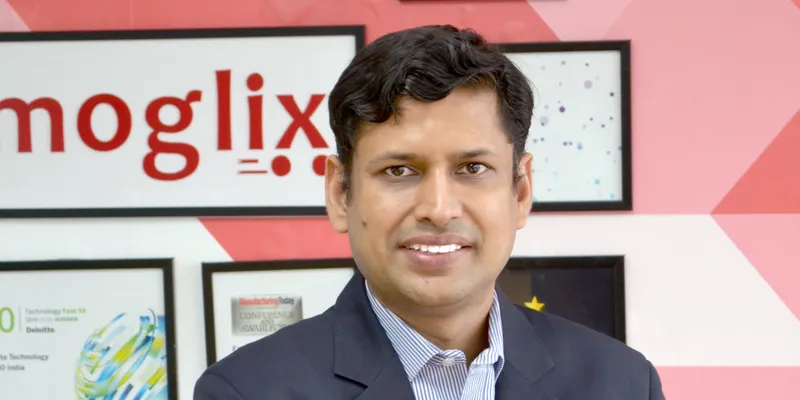[YS Learn] Moglix founder Rahul Garg on getting marquee investors like Ratan Tata, Accel on board during early days
Looking to raise your first round of funding but do not know what works? Here are some stories on how startups were able to clinch the deal and what were the steps they believe founders should take during fundraising. This time, we take a look at B2B ecommerce platform, Moglix.
Any startup founder will talk about the importance of onboarding a marquee investor during their early days. Not only do they get great mentorship, they also get the much needed validation, as one would expect the investor to have done their due diligence. It opens the doors and makes the next rounds of funding much simpler for the startup.
But what does it take to get that marquee investor? How does the fundraising process work?
When IIT Kanpur and ISB alumnus Rahul Garg was working at Google, heading AdX, India Southeast Asia and Korea, he got the idea of ‘Alibaba’ for India. He started , a B2B ecommerce platform for industrial tools and equipment, in 2015.
The same year, the team raised a seed round of $1.5 million led by Accel Venture Partners and Seed Plus with participation from Venture Highway; Ratan Tata of Tata Sons; and Shailesh Rao, VP, International Operations, Twitter.
Rahul says, “Fundraising is really an orchestration of many factors - the stars have to align on multiple factors like the domain, its growth potential and levers for the business you aspire to build, and the investment philosophy of the investors you are engaging with.”

Moglix Team
Focus on the framework and research
Explaining his journey, Rahul says,
“We engaged with only two institutional investors during the first fundraise, and fortunately both wrote cheques for us. In the beginning, you might not have complete clarity on the execution challenges and long-term strategy, but it is important to have a framework in place to think through the steps of building the business for the long term. And have a vision for the larger transformation you want to achieve. The path to the fulfilment of vision unfolds slowly and with rigorous effort.”
According to Rahul, his background also helped. During his stint at Google, he led different roles of AdX Partnerships, Strategy, and Search for new product launches across Asia. Rahul also had the opportunity to collaborate with enterprise customers from different verticals to understand how technology was enabling a paradigm shift.
“After I had communicated my decision to return to India in July 2014, I focussed on researching the market and developing the idea until December that year. Later, I spent some time as an EIR at Accel, where I worked on narrowing down the space and idea and developing the go-to-market strategy and pitch.”
While the team had some fundamentals and blueprints of its B2B commerce business, it still had to show an edge by implementing the first tech approach and a core team.
At the same time, to establish a clear differentiator, the team had to get deeply engaged with its customers in solving their problems, and hence market research was imperative.
Having a clear vision
Every investor will tell the importance of having a clear vision, especially in the early days of starting up. Rahul’s vision of Alibaba 2.0 was grand and clear. He quit his cushy job at Google and was determined in building his own startup, and he also saw a clear market opportunity.
Rahul explains that by 2015, most of the companies were starting to move from classifieds to a transaction platform, and his idea was that similar trends would follow in the B2B space as well.
After the initial round of talks, Rahul says he met with the investment committee to present the business plan. Having a clear vision and the fact that B2B was a hot and emerging space at that time helped them tremendously, he says.
“We had several brainstorming sessions with the investors. Once the investment committee's formal procedures were complete, we collaborated with them to work out the details. We actually worked out the details over a cup of coffee, on paper napkins, and we closed the deal with a handshake. That was the beginning of a new chapter for Moglix,” says Rahul.
Focus on building a relationship
Rahul explains the key is to find the right fit and develop long-term relationship in which both parties grow together. The right intent and alignment of goals really helps in building and strengthening the relationship.
He says, one needs investors who can be partners and stay committed to the founder throughout the journey.
“We went through a pivot and our investors supported us through that phase. Such transitions can only happen when your investors are committed to your vision and feel passionately about your venture. The B2B commerce space needs a time horizon of 8-10 years, and only investors who are willing to go through this time commitment will make a good fit for entrepreneurs in this industry,” says Rahul.

Rahul Garg, Moglix
Working with investors’ interests and strengths
Every investor will have specific interest areas and strengths from their past experience and the kind of partners they have. Getting to know the investors, their concerns, passion, and how they think about the industry is integral to building strong partnerships.
“One can leverage a lot from this deep expertise brought by investment partners. Do not forget they have seen a lot of startups from a very different vantage. I had the privilege of meeting our investors 10 to 15 times before we ever pitched to them, and this helped me to understand my audience and prepare for the pitch better and also ensure that we were aligned to our vision,” says Rahul.
Rahul says he has learned that in the race to grow faster and build quicker, it is tempting to start working with any investor who is showing interest. While fundraising is crucial for survival and growth of startups, it cannot be a force fit. The investors have to respect and complement the founder’s vision and have equal excitement about the space and the venture to make it a successful partnership.
Rahul adds: “As with customers, so with investors too - my perspective is that one needs to be empathetic and understand the concerns and motivations of the other person. Every individual, investor, and company is unique and has a different lens to look at your venture."
He says, "For the investor relationship to work out from fundraising for the startup to scale up, one needs to have conviction in their idea and see them through thick and thins, showing the right path when needed. It’s very crucial in this journey to find the right partner who will go the distance with you and keep nurturing the relationship as your venture grows.”
Edited by Megha Reddy


![[YS Learn] Moglix founder Rahul Garg on getting marquee investors like Ratan Tata, Accel on board during early days](https://images.yourstory.com/cs/2/a9efa9c02dd911e9adc52d913c55075e/oieJyBFBlMFnCyJ-1599389844731.jpg?mode=crop&crop=faces&ar=2%3A1&format=auto&w=1920&q=75)
![[YS Learn] 5 factors Rapido kept in mind while building its product to ensure scale and growth](https://images.yourstory.com/cs/2/a9efa9c02dd911e9adc52d913c55075e/Imagelez7-1599053692296.jpg?fm=png&auto=format&h=100&w=100&crop=entropy&fit=crop)
![[YS Learn] How to love what you do, and the reason why skill triumphs over passion](https://images.yourstory.com/cs/2/a9efa9c02dd911e9adc52d913c55075e/passionloveskillrevised1-1598951104109.png?fm=png&auto=format&h=100&w=100&crop=entropy&fit=crop)
![[YS Learn] 4 key lessons startups can learn from Zappos for high team productivity](https://images.yourstory.com/cs/2/a9efa9c02dd911e9adc52d913c55075e/800x400-01-1599148668707.png?fm=png&auto=format&h=100&w=100&crop=entropy&fit=crop)




